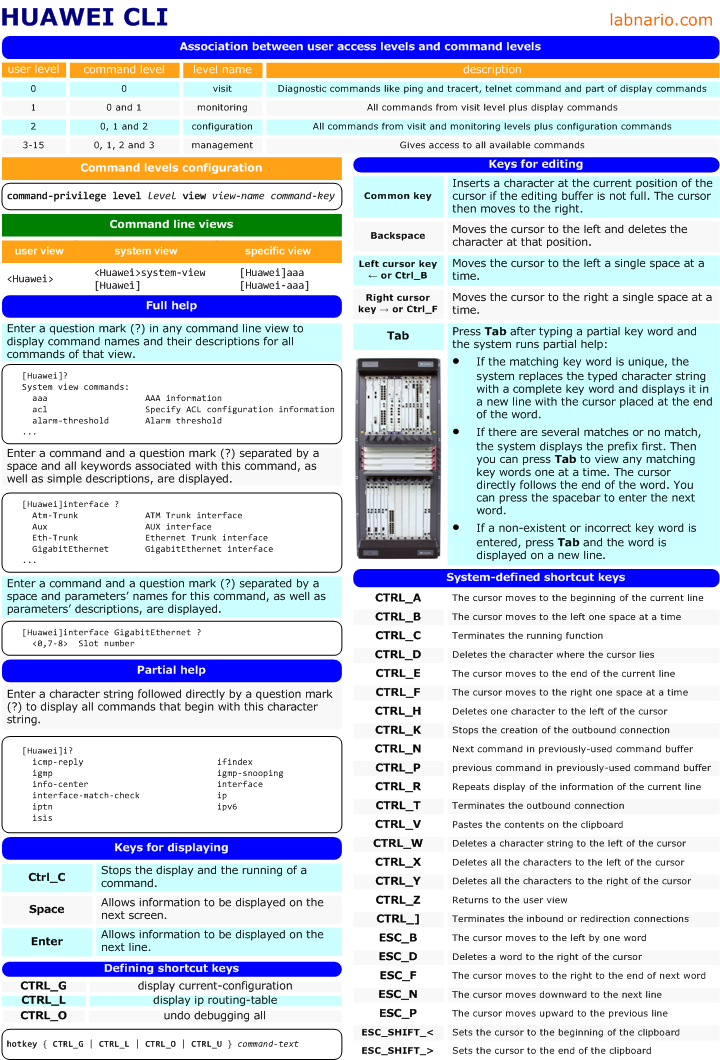display this
Very useful and very often used command on Huawei’s devices. You can use it in any view. Any time you configure something, you can use it to check what you have configured. If you set parameters, that are the same with the default ones, these parameters will not be displayed. Anyway “display current-configuration” does not also show the default parameters.
Example 1 (interface view):
[NE-GigabitEthernet1/0/1]display this # interface GigabitEthernet1/0/1 description test undo shutdown ip address 10.1.1.1 255.255.255.252 isis enable 1 isis circuit-type p2p isis circuit-level level-2 isis cost 100 isis bfd enable mpls mpls te mpls rsvp-te mpls rsvp-te hello # return
 Labnario Huawei From Scratch
Labnario Huawei From Scratch
